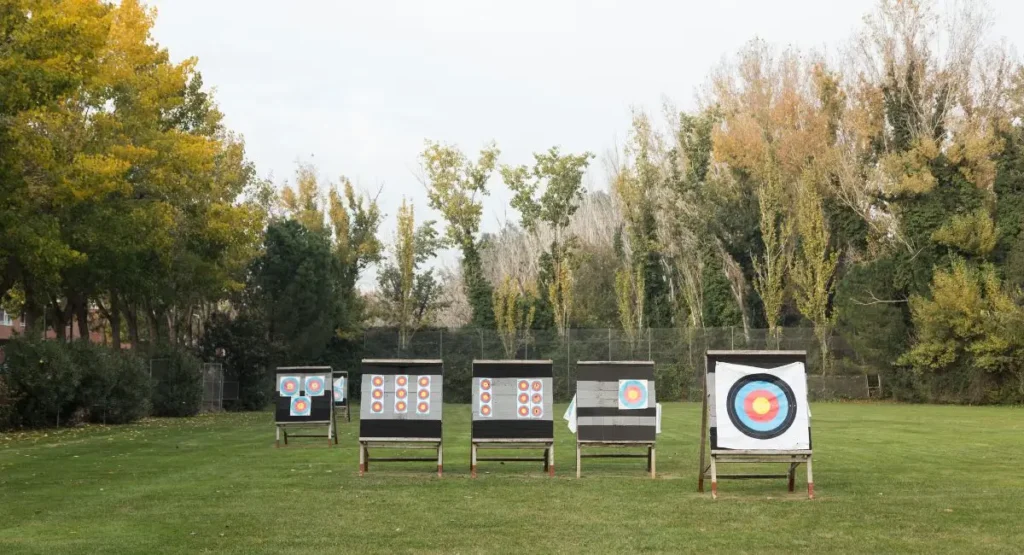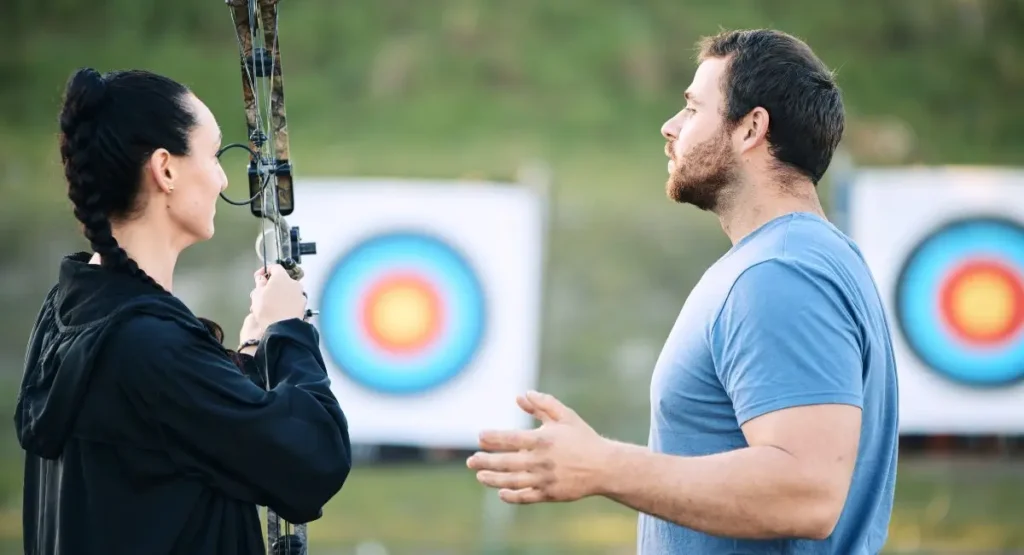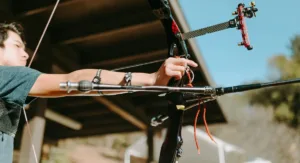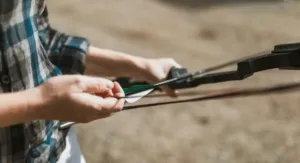What is your fascination with archery? Whether you wish to hit bullseyes at the range or wish to compete, archery offers an exciting way to challenge yourself. Throughout this guide, you will learn everything you need to know as a beginner archer, from essential gear to how to master your shooting skills.
A Brief Archery History
The roots of archery go back thousands of years. For thousands of years, archery was used as a vital survival tool in hunting and warfare. Approximately 20,000 years ago, primitive bow and arrow systems were developed in various cultures throughout the world. Archers were widely used by the Egyptians during military campaigns, while horse-mounted archery was perfected by the Mongols.
Today, archery has become both a recreational activity and a competitive sport. Technological advancements have made it more accessible and enjoyable for everyone, even beginners. Understanding archery’s historical significance gives you a deeper appreciation of the sport, whether you’re interested in target archery, field archery, or bowhunting.
Modern Day Uses And Benefits Of Archery
In today’s world, archery is much more than just a sport; it provides numerous benefits for mental and physical well-being. The sport of archery encourages participants to cultivate mindfulness as you focus on your stance, aim, and release, which are skills that are transferable to many areas of life.
The act of archery promotes physical fitness and improves muscle tone, particularly in the upper body, as it requires strength and coordination to draw a bow. Additionally, being outdoors can improve your mood and your overall health, making it a great way to feel connected to nature.
The Essential Equipment For Beginners
Comparison Of Different Types Of Bows
It is crucial for beginners to select the right bow type. Recurve bows, compound bows, and longbows are the three types of bows.
- Recurve Bow: This bow features limbs that curve away from the archer when unstrung. It’s often the choice for Olympic archers and is ideal for target shooting practice. Recurve bows are simple in design, making them easy to maintain and suitable for beginners.
- Compound Bow: Known for its mechanical system of pulleys and cams, the compound bow allows for increased precision and less draw weight at full draw. This type is excellent for hunting and often comes equipped with various accessories, such as sights and stabilizers.
- Longbow: This traditional bow is characterized by its long, simple design and lack of modern mechanisms. It requires more skill to shoot accurately and is often chosen by classic archers.
It is important to understand the differences between these bows so that you can find the one that best suits your preferences and shooting style.
Guide For Choosing Arrows
Choosing the right arrows is just as important as selecting the right bow. Arrows come in different materials, lengths, and spines, which affect their performance.
- Materials: Arrows can be made of aluminum, carbon, or wood. Aluminum arrows are durable and consistent, while carbon arrows are lightweight and offer better speed. Wood arrows provide a traditional feel but may not be as durable.
- Length: The correct arrow length is critical for safety and performance. A general guideline is that arrows should be 1-2 inches longer than your draw length. You can find your draw length by measuring the distance from your fingertips to your chin while standing with your arms outstretched.
- Spine: The spine of an arrow refers to its stiffness. Choosing the correct spine is essential to achieving the best possible results. A simple chart based on your bow’s draw weight can help you determine the right spine for your arrows.
Optional Accessories And Protective Gear
It is important to wear proper protective gear when starting archery so as to ensure the safety and comfort of the athlete.
- Arm Guard: An arm guard protects your forearm from bowstring snapping while releasing an arrow. Beginners often benefit from wearing one to avoid discomfort and bruising.
- Finger Tab or Glove: Using a finger tab or glove protects your fingers from the string and provides a smoother release. Experiment with both options to find what feels best for you.
- Quiver: A quiver is essential for storing and carrying arrows. Options vary from hip quivers to back quivers, so choose one that suits your shooting style.
Bow sights can enhance aiming, stabilizers can enhance balance, and arrow wraps can make your experience more personalized.
Archery Range and Club Selection

Find Archery Clubs Near You
It can be very beneficial for you to connect with a local archery community. You can find local archery clubs by searching online. Websites such as the Archery Trade Association and sporting goods stores often list nearby clubs.
Many clubs offer beginner classes, allowing you to learn the basics in a supportive environment while meeting like-minded people. Social media and forums can also be excellent sources of information.
The benefits of joining a community
Getting involved in an archery club is an invaluable experience for beginners. Not only will you have access to experienced mentors, you’ll also be able to participate in organized events and competitions as well. During these interactions, you will be able to share tips, techniques, and encouragement with others who are a similar caliber.
A community can also be a critical part of holding you accountable. Regular practice sessions and club events can inspire you to improve your skills and stay committed to the goal of improving your archery skills.
Techniques For Mastering Archery
Detailed Guide to Shooting Form
Mastering your shooting form is crucial for accuracy and consistency. Key components include:
- Stance: Stand with your feet shoulder-width apart, with your weight evenly distributed. This foundation provides stability and balance as you shoot.
- Grip: Hold the bow with a relaxed grip. Avoid squeezing too tightly, as this can lead to torque and inaccuracies. Your hand should be positioned below the grip for optimal control.
- Draw: Pull the string back smoothly, keeping your elbow in line with your arrow. Maintain a consistent anchor point, such as the corner of your mouth, to ensure accuracy with every shot.
- Aim and Release: Focus on your target, and breathe deeply to remain calm. When you’re ready to release the string, do so smoothly, allowing the bow to follow through naturally.
Professional Archers’ Tips
Learning from professionals is the key to improvement. Here are some tips to consider.
- Practice consistently: Repetition is vital to enhancing your skills. Commit to regular practice sessions, even if they are short.
- Record Yourself: Use video to analyze your form and identify areas for improvement. Watching yourself shoot can reveal inconsistencies you may not notice in the moment.
- Seek feedback: Don’t hesitate to ask coaches or fellow archers for insights into your technique. A fresh perspective can highlight areas for improvement.
How To Avoid Common Mistakes
Beginners often make common mistakes that hinder their progress. Some include:
- Anticipating the Shot: This is when an archer “jumps the gun” before releasing it. Instead, focus on your aim and release the arrow only when prepared.
- Inconsistent Anchor Points: Without a consistent anchor point, arrows may stray off target. Practice finding the same spot every time you draw.
- Poor breathing techniques: Holding your breath can cause tension. Instead, practice rhythmic breathing to stay relaxed during your shot.
Advanced Archery Tips
How to Maintain and Tune Your Bow
Proper maintenance is essential for optimal performance. Regularly check your bow for wear and tear, focusing on areas such as the string and limbs.
To tune your bow:
- Check Brace Height: Use a measuring tool to ensure your brace height aligns with manufacturer specifications.
- Paper Tune: Shoot an arrow through paper to observe the tear pattern. This helps identify arrow flight adjustments.
- Adjust the Nocking Point: A well-placed notching point enhances accuracy. Ensure it’s at the correct height for your arrow spine.
The Best Fitness Tips For Archery
Fitness can enhance your archery performance. Focus on:
- Upper Body Strength: Engage in exercises that strengthen your shoulders, arms, and back. Push-ups, pull-ups, and resistance training are excellent options.
- Core stability: A strong core maintains proper form and stability. Consider Pilates or yoga to improve core strength and flexibility.
- Endurance Training: Building endurance through cardio workouts can help you maintain focus during longer practice sessions or competitions.
Accuracy Techniques for Mental Focus
Archery demands mental clarity and focus. Here are some techniques to sharpen your mental game:
- Visualization: Before shooting, visualize each step of your process and the right shot landing on target. This can build confidence and improve performance.
- Mindfulness Practices: Incorporate mindfulness techniques, like meditation, to enhance your focus and calm nerves.
- Set Goals: Establish specific, measurable goals for each practice session. This fosters a positive mindset while tracking your improvements.
Safety Comes First
Detailed Safety Rules
Safety is crucial in archery. Always adhere to these essential rules:
- Always Point Downrange: Never point a bow at anyone or anything except your target.
- Use Appropriate Backstops: Ensure that behind your target is a safe area, ideally with a backstop that prevents errant arrows from going too far.
- No Loose Clothing: Avoid loose clothing that could catch on the bowstring.
How To Avoid Common Injuries
While archery is generally safe, injuries can occur. Common injuries include:
- Forearm Bruises: Often caused by the bowstring snapping against the arm. Wearing an arm guard can prevent this.
- Finger Strain: Improper grip or excessive draw weight can strain fingers. Use appropriate protective gear and ensure the bow is correctly tuned to avoid this.
- Shoulder Pain: Over time, drawing the bow can lead to shoulder discomfort. Incorporate stretching and strengthening exercises to support shoulder health.
How To Treat Minor Injuries With First Aid
Should an injury occur, basic first aid knowledge is essential.
- For minor cuts: Clean the area and apply a bandage. Keep an eye on any infection signs.
- For bruises: Use ice packs to reduce swelling and take breaks from shooting to recover.
- For finger injuries: Rest, ice, and elevation can help. If the pain persists, consult a professional.
Additional Readings And Resources
Videos And Tutorials
- YouTube Channels: Channels dedicated to archery often feature instructional videos. Look for channels like “Archery 101“ or “World Archery” for helpful tutorials.
- Online Courses: Websites like Udemy and SkillShare offer structured courses to master archery fundamentals.
Articles And Books Recommended
Consider reading:
- “Archery for Beginners” by Tom McEwen
- “The Archery Bible” by John Doe
- Articles from reputable sites like Archery 360 or USA Archery for ongoing insights.
Watching Sports Competitions And Events
Watching competitions can also boost motivation. Keep an eye on events like:
- The World Archery Championships
- Local tournaments hosted by clubs
- Olympic archery events to witness the best of the best.
Conclusion
Starting your archery journey can be exciting and rewarding. Whether you’re interested in honing your skills or joining a community, this guide serves as your launching pad. Remember to practice regularly and focus on improving your techniques and safety awareness.
Don’t hesitate to take that first step and join a local club or engage with fellow archers. The world of archery awaits you!
Frequently Asked Questions
What Are The 3 Rules Of Archery?
- Always point your bow downrange.
- Only nock an arrow when you are ready to shoot.
- Be aware of your surroundings at all times.
How Do I Get Started In Archery?
Start by finding a local archery club or range, where you can receive guidance and instruction.
What Type Of Bow Should A Beginner Use?
A recurve bow is often recommended for beginners due to its simplicity and ease of use.
Is Archery Easy To Learn?
With consistent practice and proper guidance, most beginners find archery manageable and enjoyable.
Can I Learn To Bow By Myself?
While self-teaching is possible, joining a club or taking lessons is advisable for receiving immediate feedback and support.
Is Archery An Expensive Hobby?
Costs can vary significantly based on equipment choices. Beginners can start with budget-friendly options before investing in higher-quality gear.
By following these insights, you’ll be well on your way to mastering archery and enjoying this exceptional sport for years to come!
See More Articles
- Mastering The Left Hand Compound Bow – A Comprehensive Guide
- Ultimate Guide To Compound Bow Setup: 9 – Step Comprehensive Process
- Avoiding Pitfalls – Your Ultimate Guide To Perfect Bow Brace Height
- Comprehensive Guide Of Recurve Bow Accessories To Boost Your Archery Skills
- How Far Can A Compound Bow Shoot – Exploring The Limits
- How And Why Do Archers Wear Arm Guards?








2 thoughts on “Hit The Target With This Ultimate Guide To Archery For Beginners”
Comments are closed.